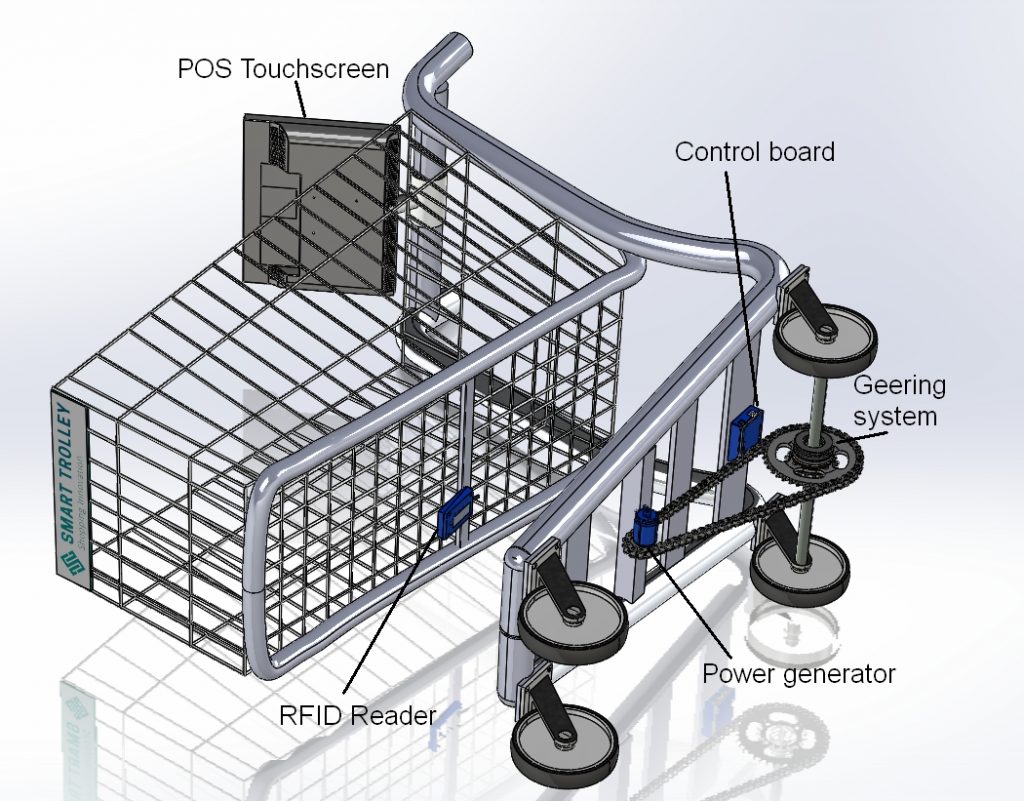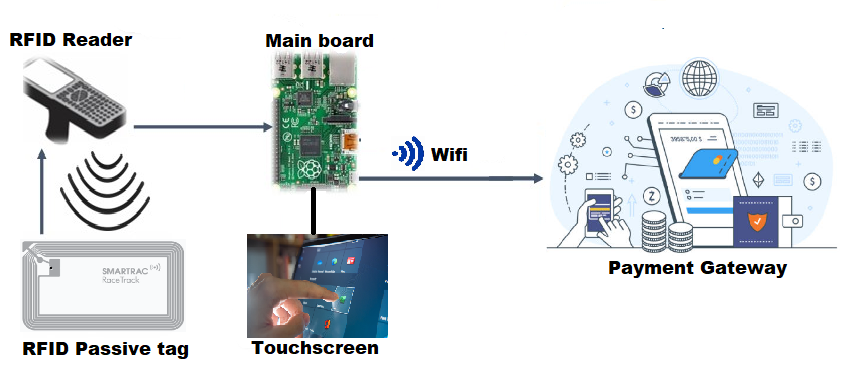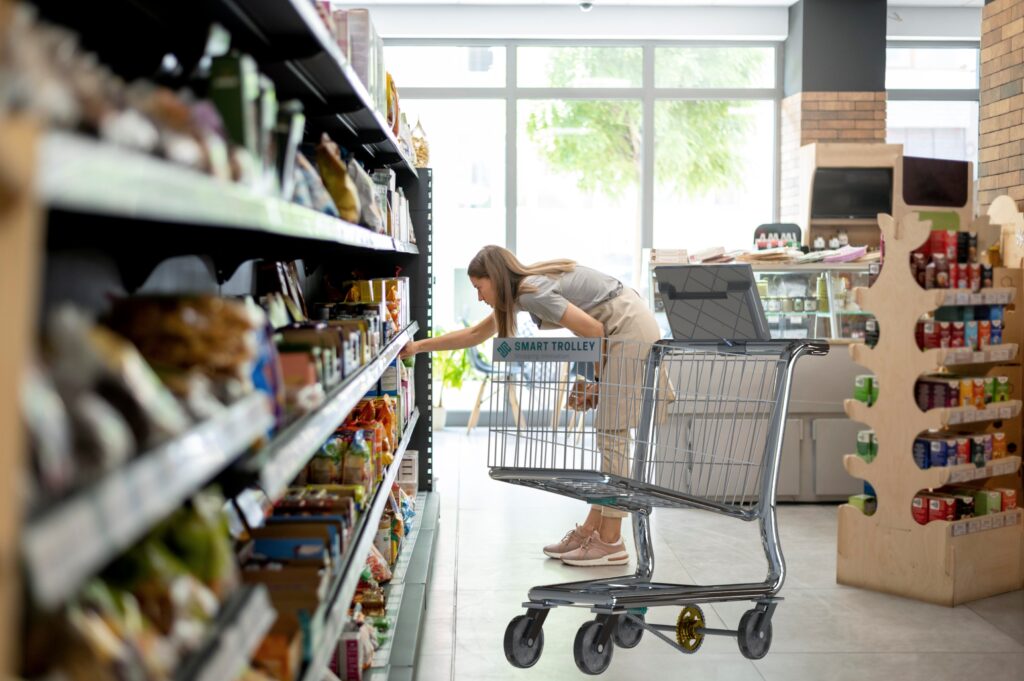What problem does “Smart Trolley” to solve?
For customers, waiting in line to buy groceries is the incredibly inconvenient. A research report from Forrester Research and Digimarc revealed three of the most crucial factors influencing a shopper’s decision: the first two – price and location – were a given, the strong showing of checkout experience was a surprise. 50% of survey respondents cited checkout experience as “very important” and another 35% cited it as “important” in deciding where to shop. According to the report, “while it’s no surprise that customers don’t want to wait in long lines and have slow checkout processes, the extent to which they care might surprise many retailers.”

When the question “how satisfied are you with each of the following parts of your shopping experience?” was asked, only 23% of respondents answered “length of lines,” making it the aspect of shopping with which they were least satisfied – surprisingly, ranked even lower than “price.”
“Shoppers today have less time than ever to get their grocery shopping done, and they want it to be a fast and easy experience,” according to the report, an observation borne out of the finding that long lines are the most common reason for shopping trip abandonment. Over half of shoppers are willing to spend less in a store, or even walk away entirely, to avoid a slow checkout.
What problem does “Smart Trolley” to solve?
For customers, waiting in line to buy groceries is the incredibly inconvenient. A research report from Forrester Research and Digimarc revealed three of the most crucial factors influencing a shopper’s decision: the first two – price and location – were a given, the strong showing of checkout experience was a surprise. 50% of survey respondents cited checkout experience as “very important” and another 35% cited it as “important” in deciding where to shop. According to the report, “while it’s no surprise that customers don’t want to wait in long lines and have slow checkout processes, the extent to which they care might surprise many retailers.”

When the question “how satisfied are you with each of the following parts of your shopping experience?” was asked, only 23% of respondents answered “length of lines,” making it the aspect of shopping with which they were least satisfied – surprisingly, ranked even lower than “price.”
“Shoppers today have less time than ever to get their grocery shopping done, and they want it to be a fast and easy experience,” according to the report, an observation borne out of the finding that long lines are the most common reason for shopping trip abandonment. Over half of shoppers are willing to spend less in a store, or even walk away entirely, to avoid a slow checkout.
Benefits of Smart Trolley
Shoppers’ Perspective
Smart Trolley helps shoppers improve their shopping experience at the grocery stores.
The “smart trolley” has been developed to enable shoppers to bypass traditional checkout lanes, one of the most unpleasant moments for any grocery shopper. With Smart Trolley, one may purchase the goods they have selected without dealing with lineups and cashiers, thereby helping shoppers save time in the checkout process.
The Smart Trolley can calculate checkout price automatically as shoppers place goods and products inside it. This makes it easy for the customers to know how much they have to pay as they shop. It is designed to be highly efficient and fully synchronised with the retailer’s current system.
The Smart Trolley can also help customers locate the items they are looking for without having to seek help from a store assistant.
Supermarket's Perspective
The Smart Trolley is a sustainable product, as the use of RFID tags does not involve any energy consumption. No external charging (wall socket) required as it adopts the “spring + gear” system which can generate the energy to battery charger automatically.
Adoption of the Smart Trolley system can also help reduce the manpower required to support checkout activities and increases customer satisfaction as the Smart Trolley system helps to improve customers’ shopping experience.
The product is cost-efficient compared to other solutions in the market. The target price is in a range of USD 300-500/unit
Benefits of Smart Trolley
Shoppers’ Perspective
Smart Trolley helps shoppers improve their shopping experience at the grocery stores.
The “smart trolley” has been developed to enable shoppers to bypass traditional checkout lanes, one of the most unpleasant moments for any grocery shopper. With Smart Trolley, one may purchase the goods they have selected without dealing with lineups and cashiers, thereby helping shoppers save time in the checkout process.
The Smart Trolley can calculate checkout price automatically as shoppers place goods and products inside it. This makes it easy for the customers to know how much they have to pay as they shop. It is designed to be highly efficient and fully synchronised with the retailer’s current system.
The Smart Trolley can also help customers locate the items they are looking for without having to seek help from a store assistant.
Supermarket's Perspective
The Smart Trolley is a sustainable product, as the use of RFID tags does not involve any energy consumption. No external charging (wall socket) required as it adopts the “spring + gear” system which can generate the energy to battery charger automatically.
Adoption of the Smart Trolley system can also help reduce the manpower required to support checkout activities and increases customer satisfaction as the Smart Trolley system helps to improve customers’ shopping experience.
The product is cost-efficient compared to other solutions in the market. The target price is in a range of USD 300-500/unit
How It Works
System design
The smart shopping system consists of trolleys that are incorporated with RFID Reader. And in all the commodities present in the shopping mall, a Passive RFID tag is separately attached that has distinctive RFID number. The moment at which a customer places a product they want to buy in the smart trolley, the RFID tag of that product is identified by the RFID Reader which is attached to smart cart.

Every product has its own unique RFID identification number. The database contains all information regarding the RFID card and its associated product. The Main board is responsible for coordinating all activities. Customers are issued membership cards. When the consumer swipes his membership card, the web application displays all of his login information.
The application is dynamically updated whenever the customer adds an item to their shopping cart. The product information is displayed on a screen attached to the trolley. When the customer has completed shopping, he or she must swipe the membership card again, at which point the server calculates the total cost, which is displayed on the web application. The mode of payment is flexible, such that customers can pay online or even with a mobile wallet. After payment, the database is updated, and the user is free to exit the store.
Additional Power Innovation
The system works in a way that the wheels of the Smart Trolley are linked to a potential energy storage component, such as a coil spring. The spring is wound with each movement of the trolley, regardless of the distance that the trolley travels. When the coil spring has been wound to a pre-determined torque, the spring is released to drive an input to an electrical generator. Once the potential energy in the spring has been dissipated the winding cycle begins again and due to consistent moving of the trolley wheels provide power to the rechargeable devices.
Architecture Flow
Step 1: Every new customer receives a unique RFID card upon payment of the prepaid fee and enrollment.
Step 2: The Verified customer can begin purchasing by tapping their RFID card on the Smart-cart’s RFID reader.
Step 3: The choice to choose between previously purchased history list and new list with the available wallet balance.
Step 4: The customer can then select the requisite product list from the supermarket’s inventory.
Step 5: Every product scanned by the customer gets displayed onscreen with its weight, quantity and price.
Step 6: When the RFID Card is read by the RFID reader, the complete bill amount is deducted from the prepaid balance of the customer.

How It Works
System Design
The smart shopping system consists of trolleys that are incorporated with RFID Reader. And in all the commodities present in the shopping mall, a Passive RFID tag is separately attached that has distinctive RFID number. The moment at which a customer places a product they want to buy in the smart trolley, the RFID tag of that product is identified by the RFID Reader which is attached to smart cart.

Every product has its own unique RFID identification number. The database contains all information regarding the RFID card and its associated product. The Main board is responsible for coordinating all activities. Customers are issued membership cards. When the consumer swipes his membership card, the web application displays all of his login information.
The application is dynamically updated whenever the customer adds an item to their shopping cart. The product information is displayed on a screen attached to the trolley. When the customer has completed shopping, he or she must swipe the membership card again, at which point the server calculates the total cost, which is displayed on the web application. The mode of payment is flexible, such that customers can pay online or even with a mobile wallet. After payment, the database is updated, and the user is free to exit the store.
Additional Power Innovation
The system works in a way that the wheels of the Smart Trolley are linked to a potential energy storage component, such as a coil spring. The spring is wound with each movement of the trolley, regardless of the distance that the trolley travels. When the coil spring has been wound to a pre-determined torque, the spring is released to drive an input to an electrical generator. Once the potential energy in the spring has been dissipated the winding cycle begins again and due to consistent moving of the trolley wheels provide power to the rechargeable devices
Architecture Flow
Step 1: Every new customer receives a unique RFID card upon payment of the prepaid fee and enrollment.
Step 2: The Verified customer can begin purchasing by tapping their RFID card on the Smart-cart’s RFID reader.
Step 3: The choice to choose between previously purchased history list and new list with the available wallet balance.
Step 4: The customer can then select the requisite product list from the supermarket’s inventory.
Step 5: Every product scanned by the customer gets displayed onscreen with its weight, quantity and price.
Step 6: When the RFID Card is read by the RFID reader, the complete bill amount is deducted from the prepaid balance of the customer.


